Supposedly this blog is about dyeing. Even though I don’t seem to write about it very often, I do sometimes actually dye things. This week I had great success with woolen yarns using Queen Anne’s Lace flowers. Plus I managed a successful woad vat, aerated and everything. Here are the lovely yellows, greens, and blues hanging on the line to dry in the back yard (each skein is about 4 ounces).
It has been a bumper year for Queen Anne’s Lace (or Wild Carrot, Daucus carota). I started noticing how prolific the Queen Anne’s Lace was earlier in the spring. Here are some photos of seedlings.
It’s a biennial, so the first year it doesn’t flower. The foliage looks and smells exactly like baby carrots because it’s a wild relative (and ancestor, I believe) of the domesticated carrot. The flowers are tiny, white and lacy, and they are grouped together in a cluster known as a compound umbel. There’s usually a dark red floret at the center, but not always.
Above is an umbel about to bloom, and below are umbels in full bloom.
Here’s the whole plant blooming by the side of the road. This year I have seen many plants as tall as me or taller.
My usual practice in harvesting wild dye plants is only to gather from areas that have already been disturbed, such as the side of the road or under power lines or by parking lots at the mall. I stick to introduced, weedy, and/or abundant plants.
So far I have just used the flowers of Queen Anne’s Lace for dyeing but no other part of the plant. I’m sure you could get yellow or a yellowish green from the foliage as well. I suppose I should try it. The flowers smell fantastic when they are simmering, and so does the yarn when it’s done. Sweet and lemony.
I picked three pounds of flowers from various spots around Amherst, divided the quantity between two pots, covered the flowers in water, and simmered them for an hour. Then they cooled and steeped overnight. Here’s the dyebath the next morning before I strained it.
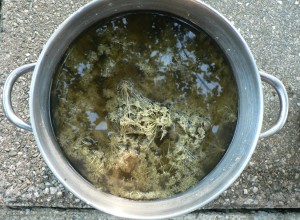 It doesn’t look impressive but it smells delicious. Here are the strained out flowers.
It doesn’t look impressive but it smells delicious. Here are the strained out flowers.
And here are a couple close-ups of the squeezed-out flowers. The structure of the umbel and the tiny little flowers that compose it are really delicate and complex.
All together I dyed two pounds of singles rug wool, premordanted with alum sulfate, to varying shades of yellow. I kept the pots separate, and successively dyed one 4-oz. skein in each pot until the dyebaths were exhausted. I like Queen Anne’s Lace as a dyeplant because it makes a greenish yellow, which combines well with woad to make greens. The very pale yellow from the last exhaust made a gorgeous light blue-green.
I overdyed half the skeins with woad, and obtained the range of greens you can see in the photo at the top of the post.

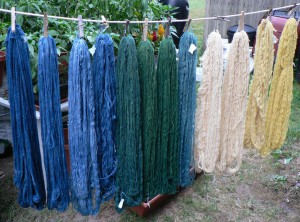

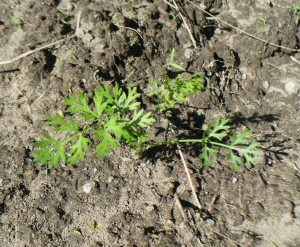
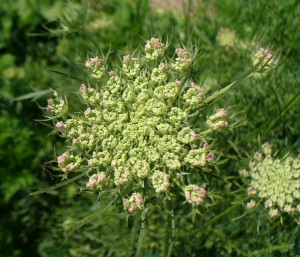
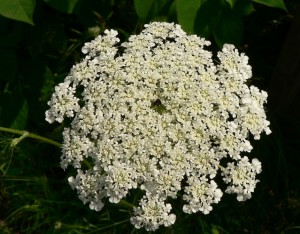
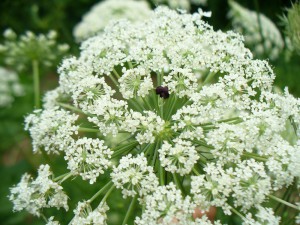

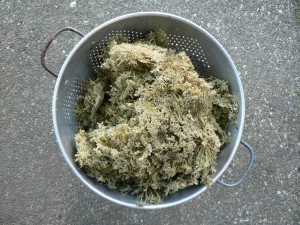
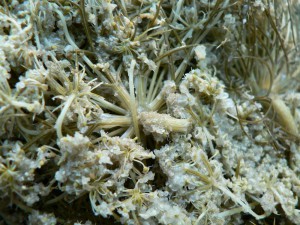
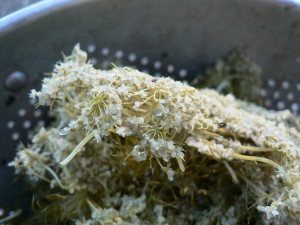
One thought on “Queen Anne’s Lace and Woad”
Comments are closed.